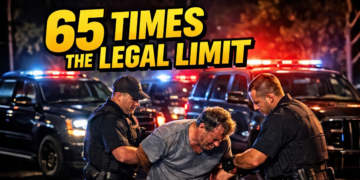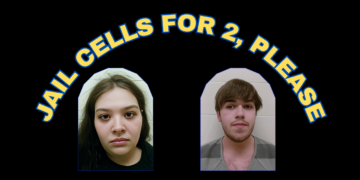For years, the Scioto County Sheriff’s Office (SCSO) has provided, by request of the local media, a daily “chief’s report,” a PDF document detailing the previous day’s calls and deputy responses. But what should have been a window into the office’s operations was often obscured by heavy redactions—black boxes covering key details. Local media tolerated the practice for a time, but a landmark 2022 Ohio Supreme Court ruling in Myers v. Meyers shifted the landscape, forcing law enforcement agencies statewide to open their records to public scrutiny. Now, faced with demands for transparency, the SCSO has gone to extraordinary lengths to keep the public in the dark, raising questions about accountability and legal exposure at taxpayers’ expense.
The Myers v. Meyers case, in which Ohio media publisher Derek Myers successfully sued the Chillicothe Police Department for access to incident reports, set a precedent that law enforcement could no longer withhold broad swaths of records under vague exemptions. The ruling clarified that witness statements and narratives—barring specific investigative exceptions—must be disclosed, shining a light on how public funds are spent. When local media invoked the decision to challenge SCSO’s redaction-heavy reports, the Sheriff’s Office initially scrambled to comply.
Sheriff David Thoroughman turned to Scioto County Prosecutor Shane Tieman for guidance. After reviewing the Myers ruling, Tieman’s office confirmed that the office’s blanket redactions violated Ohio public records law. But rather than embrace transparency, SCSO doubled down on secrecy. Captain Ron Davis, acting on Thoroughman’s behalf, contacted Sundance, the company managing the county’s Computer-Aided Dispatch (CAD) system, which logs all calls and generates the chief’s report.
In emails obtained through public records requests, Davis pressed Sundance to remove the report feature entirely.
“I definitely need it removed as we do not use it but the media is demanding copies of it daily and it has too much on it,” Davis wrote. “Our prosecutor is saying that if it’s in our system they can request it, so removing it as it is not pertaining to us would be the only way to solve that.”
Sundance balked, explaining that the report was a core component of the system used by dozens of law enforcement agencies. The best they could offer was to “hide” the button that generates it. SCSO seized on this workaround, claiming they could no longer produce the report—even though it still exists in the database.
Legal experts liken the tactic to locking a filing cabinet and tossing the key, then shrugging and claiming the contents are inaccessible.
“It’s a deliberate attempt to sidestep the law,” said Emmett Robinson, the Cleveland-based public records attorney who represented Myers in the Supreme Court case. “The records don’t vanish just because you disable a button.”
Robinson, a Harvard Law graduate and Jeopardy! champion, called SCSO’s actions “dishonest” and a “disservice” to both the media and the public.
“Intentionally altering a computer system to hide information doesn’t exempt the sheriff from his duty to disclose,” he said. “If anything, it heightens their legal risk.”
Under Ohio law, public officials who flout records requests can face statutory damages and attorneys’ fees—costs borne by taxpayers, not the officials themselves.
The SCSO’s maneuvers reveal a troubling mindset: a willingness to prioritize secrecy over accountability, even for mundane calls like trespassing complaints or cats stuck in trees.
By clinging to opacity, Thoroughman’s office isn’t just defying a court ruling—it’s inviting litigation that could drain public coffers.
“A court is more likely to penalize this kind of gamesmanship,” Robinson warned, noting that the intentional nature of SCSO’s actions could lead to steeper consequences.
As Scioto County residents foot the bill for this stonewalling, the Sheriff’s Office stands on shaky ground. The chief’s log remains in the system, a digital skeleton in the closet that no amount of button-hiding can erase.
What began as a routine public records dispute has morphed into a saga of evasion, exposing a sheriff’s office more interested in shielding its daily deeds than serving the taxpayers who fund it. In their zeal to conceal, Thoroughman and his team have opened the door to lawsuits that could cost far more than the transparency they so desperately seek to avoid.





















































































